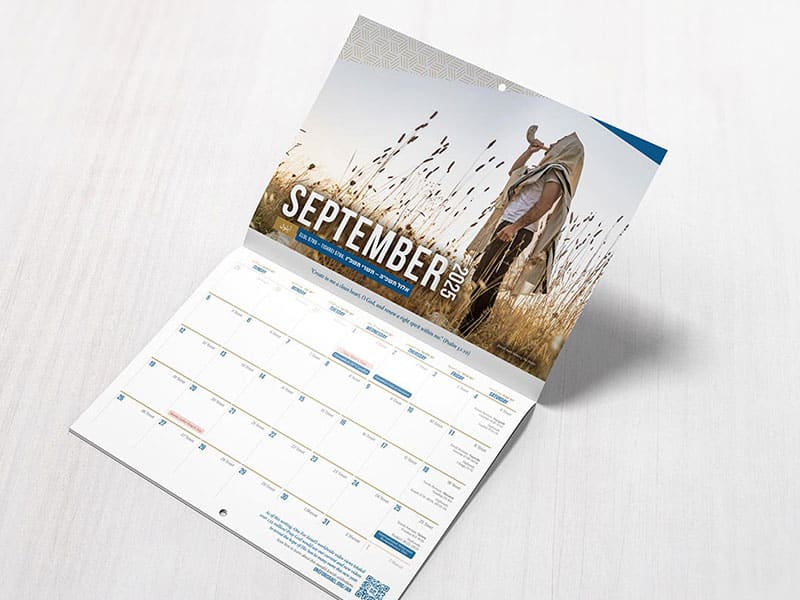Have you ever counted the days till an event you’re excited about? Time can go so slowly when you’re watching it. They say “a watched pot never boils” meaning that the more we pay attention to the time, the more conscious we are of it going slowly. God, unsurprisingly, is aware of this phenomenon, and has capitalised on it to drive a powerful truth home. I am talking about the Biblical tradition of “Counting the Omer”.
Yeshua walked the earth for 40 days after coming back to life. 40 days! Do you know how long that is? The Jewish people would have a good sense of how long that is, because it falls in their time of Counting the Omer for the 50 days between Passover and Pentecost.
Counting the Omer
In Leviticus 23, the chapter in which God lays down the law on how to celebrate all the feasts, he says this:
“You shall count seven full weeks from the day after the Sabbath, from the day that you brought the sheaf of the wave offering. You shall count fifty days to the day after the seventh Sabbath. Then you shall present a grain offering of new grain to the Lord.” (verses 15-16)
Just as any woman who has given birth knows exactly how long nine months feels, the Jewish people know exactly how long it feels from Passover until the feast of Weeks (called the feast of Shavuot in Hebrew, which means weeks, also known as Pentecost because of the 50 days) because they have to count the days off every year. Fifty days. Seven weeks. Every day, the omer is counted. I have an Orthodox Jewish friend and her father calls her every day at this time of year to remind her where they are up to in “the counting”.
It’s a bit like having an advent calendar, but with no chocolate… and double the time. Quite a long time really.
And what is an omer? You might well ask. An omer is a unit of measurement and is about three and a half litres, or just over fifteen cups of dry commodities. In this case, barley. Sometimes an omer is translated as sheaf, since it is about the amount of barley or grains that you would need to bundle into a sheaf. So the instruction is to wave an omer, or a sheaf of barley before the Lord, and then count seven weeks until the wheat harvest has ripened, and the feast of Weeks arrives.
The significance of the time frame
So God has given the Jewish people an internal clock and a good sense of this time frame. But do you realise that this is the length of time between the resurrection and the day that God poured out His Holy Spirit at Pentecost, the Feast of Weeks?
He was crucified at Passover, and raised on the morning of the third day which is when the counting starts, and ascended ten days before the Holy Spirit was poured out at the feast of Weeks. For forty of those fifty carefully counted days, Yeshua was walking around, hanging out with friends, eating with them, talking with them, freaking them out from time to time. Especially at the beginning.
What I find interesting as well is that if you look through the Bible at every time barley is mentioned, it is in the context of victory and/or provision. This is a very good description of Yeshua’s saving work when He died and rose again during Passover. Also, the waving of the barley is required along with other animal, grain and new wine offerings listed in Leviticus 23, called the Firstfruits.
Paul mentions not once but twice in 1 Corinthians 15:20-23 that this is a foreshadowing of Yeshua’s resurrection:
“But in fact Christ has been raised from the dead, the firstfruits of those who have fallen asleep. For as by a man came death, by a man has come also the resurrection of the dead. For as in Adam all die, so also in Christ shall all be made alive. But each in his own order: Christ the firstfruits, then at his coming those who belong to Christ.”
It was exactly at this time of year that Yeshua rose again from the dead, victoriously. It was during the counting of the omer that he walked the earth in his resurrection body, and it was just before the feast of Weeks that he ascended to heaven again, and sent the Holy Spirit as he promised.
40 days is a long time!
It was not just a mirage or a one-off hallucination. At one point over 500 people saw Him at the same time, according to 1 Corinthians 15:6. Thomas poked the wounds gouged by the nails and got a graphic close-up of the gaping hole in his side. Yeshua could traverse solid walls but He could also eat a fish dinner. His friends didn’t recognise him immediately, but he quickly proved that it was really was Him. Yeshua is not the first to have ever been raised from the dead (there were two boys in the times of Elijah and Elisha, and Yeshua raised a twelve year old girl, the widow’s son from Nain, and His friend Lazarus from the dead) but He was the first to return in His resurrection body, never to die again.
It’s an astonishing fact. Why don’t you try “counting the omer” for yourself, marking the days from Passover until Pentecost (the feast of Shavuot), and you can get a tangible feel of just how long it was that our resurrected Lord walked the earth, after beating death for us all.
Luke assures his reader,
“After his suffering, he presented himself to them and gave many convincing proofs that he was alive.” (Acts 1:3)
He rose from the dead after Passover, for forty days he was among them, teaching about the kingdom of God and explaining how He fulfilled the prophecies, and then He ascended to His place at the right hand of the Father a week before Pentecost.
Friends, He’s alive. Very much alive.















